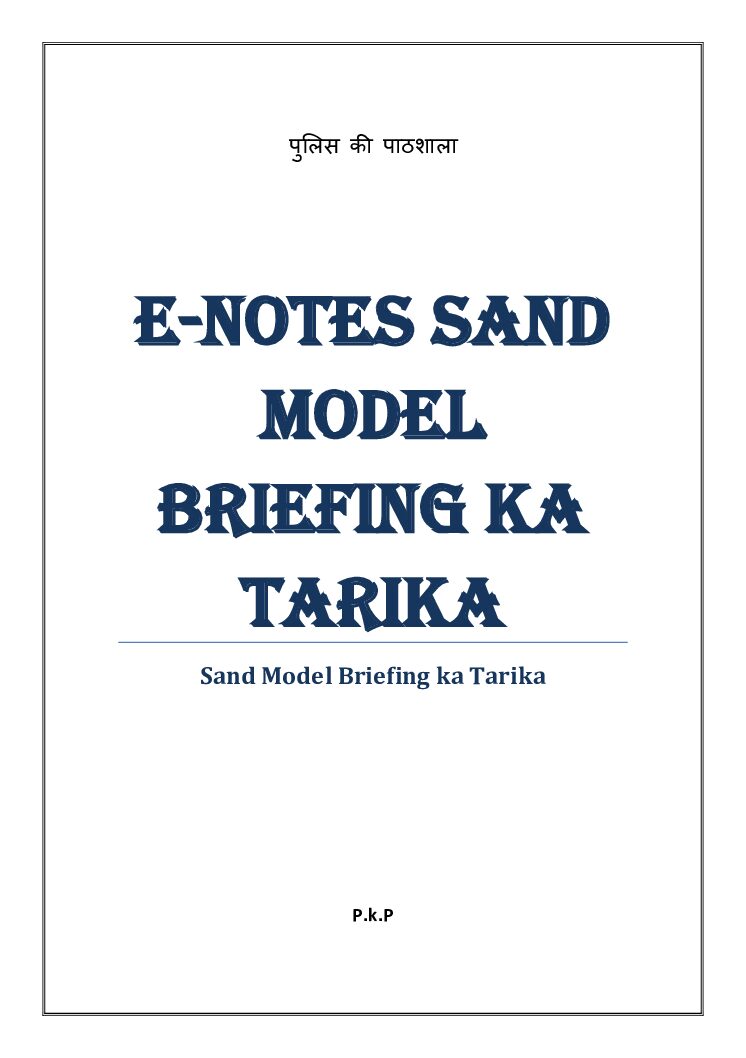Introduction – What is the One Big Beautiful Bill Act of 2025?
In July 2025, the United States passed a massive piece of legislation called the One Big Beautiful Bill Act. From tax rules to healthcare, from immigration to education funding—this bill touches almost every part of American life. If you are a law student, a practicing lawyer, or just someone who cares about legal policy, this is something you simply can’t ignore.
This blog post will walk you through the 7 most powerful legal changes in the One Big Beautiful Bill Act, in clear and simple language. You’ll see how this law affects real people, how it challenges existing statutes, and why it’s causing big debates in legal and political circles. The One Big Beautiful Bill Act explained in simple terms will help you understand what’s actually happening—not just what’s shown in the news headlines.
You may read : Top 10 Powerful Concepts of Justice Explained with Case Laws
The bill is more than a collection of policies. It’s a legal shift. For example, new tax rules will change how businesses report income. Medicaid will now require some people to work. Immigration rules have become tighter. These are not just political changes; they are deep legal reforms that affect millions of people across the country.
The One Big Beautiful Bill Act of 2025 is a sweeping U.S. law that impacts taxes, healthcare, immigration, education, and more. Passed via budget reconciliation, it avoided a Senate filibuster. This law affects law students, lawyers, businesses, and everyday Americans. It reshapes public programs and legal responsibilities at every level.
If you’re studying constitutional law or public policy in India, you’ll also find this useful. We’ll draw comparisons between India’s fiscal laws and how this American bill was passed through a legal shortcut called budget reconciliation.
By the end of this post, you’ll know:
- What changed,
- Why it matters,
- And how these changes may shape future laws.
So, let’s begin with the first major shift: how tax law was rewritten
Major Tax Code Changes That Affect Small Businesses and the Middle Class
One of the biggest legal changes in the One Big Beautiful Bill Act of 2025 is how it rewrites tax law. This isn’t just a small update. It’s a full reshaping of how individuals and small businesses pay taxes in the United States. If you’re a law student or legal researcher, this is one area you should study carefully.
The bill changes income tax brackets for both individuals and families. For the middle class, this means lower tax rates in the short term—but fewer deductions in the long term. That’s a trade-off with real legal and financial effects. The One Big Beautiful Bill Act explained in simple terms means people earning between $50,000 and $150,000 per year will see modest relief today, but might owe more in a few years.
For small business owners, the bill expands the pass-through deduction but limits certain credits. It makes new rules for LLCs, freelancers, and consultants. These are legal changes that affect how income is reported and how audits are triggered. If you’re studying tax law in the USA, this is a practical case of how one law can shift the balance between taxpayers and the IRS.
Lawyers and accounting professionals must now deal with updated IRS forms, tighter reporting timelines, and possible penalties. The bill also places new compliance burdens on small firms that previously had simpler rules.
The bill extends 2017 tax brackets, doubles the standard deduction, raises the child tax credit to $2,200, and introduces a 20% pass‑through deduction for small businesses. It also allows up to $25,000 deduction for overtime and tip income through 2028
It permits immediate expensing of domestic R&D costs, benefiting tech and corporate sectors
The goal, according to supporters, is to “simplify” the tax system. But critics argue that it helps the top earners more than the middle class. The legal debate is just beginning.
You may read : 5 Powerful Truths: Why Justice Needs Law, But Also Goes Beyond It
Medicaid Work Requirements and Their Legal Implications
The One Big Beautiful Bill Act of 2025 made a big shift in America’s healthcare policy—especially for people on Medicaid. One of the most debated legal changes in the One Big Beautiful Bill Act is the introduction of work requirements for Medicaid recipients. This means that some people must now work, study, or volunteer to keep receiving government healthcare support.
On the surface, it may sound like a policy decision. But if you look deeper, it’s a serious legal reform with constitutional and ethical questions. Medicaid is a federal-state program. States manage it, but the money comes from Washington. So when the federal law forces states to apply work rules, it changes how power is shared between state and federal governments.
For law students, this is an excellent example of federalism in action. Supporters say the law helps reduce “dependency” and saves taxpayer money. Critics argue it could violate healthcare rights or discriminate against people who are too sick to work. Already, some states are facing lawsuits over these work rules. Courts must now decide: Can the federal government tie Medicaid funds to a person’s job status?
The One Big Beautiful Bill Act explained in simple terms says if you’re aged 18 to 55 and don’t have a disability, you need to work at least 20 hours a week to qualify for Medicaid. If you don’t report your hours, you could lose coverage.
The law mandates 80 hours/month of work, volunteering, or study for non-exempt adults receiving Medicaid. It increases administrative requirements and leads to projected coverage losses.
For low-income Americans, this change is not just paperwork—it’s the difference between getting medical care or not. For lawyers and judges, it raises questions about fairness, due process, and access to basic healthcare.
Immigration Law Adjustments That Could Affect Green Card Applicants
The One Big Beautiful Bill Act of 2025 has also brought major legal changes to immigration law in the United States. If you’re an international student, a green card applicant, or a lawyer working in immigration, these changes are extremely important. The legal changes in the One Big Beautiful Bill Act go far beyond border security — they quietly shift the way America welcomes or rejects new immigrants.
One of the key provisions limits the number of family-based green cards and tightens eligibility rules. The bill introduces stricter income verification requirements for sponsors and raises the bar for public charge assessments. In simple terms, it’s now harder for immigrants to qualify for permanent residence if they or their sponsors cannot meet strict financial standards.
The bill increases funding for ICE, reduces access to green cards, and raises fees. Mixed status families may lose access to benefits. Sponsorship requirements are stricter.
The One Big Beautiful Bill Act explained for law students shows that this shift in immigration law affects not just new applications, but also renewals and visa transitions. For instance, immigrants on H-1B or student visas may now face longer wait times or more paperwork to change status.
You may read : What to Do If a Vendor Refuses to Deliver in India? Legal Options & Remedies Explained.
Supporters of the bill argue that the goal is to protect American jobs and reduce dependency on public programs. But critics say it creates legal hurdles that could violate the Equal Protection Clause or existing immigration statutes. These changes are likely to face constitutional challenges in U.S. courts.
For law students in India and the U.S., this section of the bill offers a real-life case study in how federal law, administrative rules, and civil rights intersect. Immigration attorneys now must deal with more complex filings, documentation checks, and client rejections based on expanded criteria.
Unemployment Benefits and Social Safety Programs

Another major legal shift in the One Big Beautiful Bill Act of 2025 is its impact on unemployment benefits and social safety programs. This part of the law changes how long people can receive help, who qualifies, and what they must do to stay eligible. It’s a huge change in how the U.S. supports people during hard times.
Before this bill, most unemployed Americans could receive benefits for up to 26 weeks. But now, under the new law, unemployment assistance is reduced to a maximum of 20 weeks in many states. Some job seekers may even be cut off earlier if they don’t meet strict new work search requirements. The legal changes in the One Big Beautiful Bill Act make it clear: fewer people will get help, and for a shorter time.
Unemployment benefits are reduced from 26 to 20 weeks. SNAP and TANF eligibility is tightened, requiring frequent reporting. These changes affect millions of low-income families.
There are also new restrictions on other safety net programs like food assistance (SNAP) and Temporary Assistance for Needy Families (TANF). These programs now require more frequent eligibility checks and reporting. Missing a single form or deadline could mean losing access to essential support. For law students and public policy analysts, this raises important questions about due process, equal protection, and the right to basic human dignity.
The One Big Beautiful Bill Act explained in this context shows that laws are not just words on paper—they directly affect the lives of millions of low-income families, especially single parents and older workers who struggle to rejoin the workforce.
Supporters say this part of the bill encourages people to work and reduces government spending. Critics argue it puts extra pressure on vulnerable groups and may violate existing federal laws meant to protect the poor.
Education Funding and Federal Loan Policy Changes
The One Big Beautiful Bill Act of 2025 also brings significant legal changes to how the U.S. government handles education funding and student loans. These changes may not make headlines every day, but for millions of students and graduates, they are deeply personal—and legally important.
One of the most talked-about shifts is the reduction in federal grants for low-income college students. The Pell Grant program, which helps students pay for college, has seen funding cuts. While the government says this is to “balance the budget,” students from underprivileged backgrounds are left with fewer options to afford higher education. This raises constitutional and policy questions about equal access to education.
You may read : 7 Powerful Ways Law Has Transformed Indian Society
Another major change in the One Big Beautiful Bill Act explained in simple terms is how it affects student loans. The bill ends certain forgiveness programs that used to help teachers, nurses, and public servants cancel their loans after a set number of years. Now, those forgiveness pathways are gone, and repayment plans are tighter.
The law cuts Pell Grants and ends some public-service loan forgiveness programs. It restricts income-driven repayment options and limits emergency relief powers of the Dept. of Education.
For law students in the USA and India, this is a great example of how legal systems directly affect education access and social mobility. What’s more, the bill limits the Department of Education’s power to pause loan repayments during national emergencies—something that was widely used during the COVID-19 pandemic.
The legal changes in the One Big Beautiful Bill Act also redefine how interest is applied and limit income-driven repayment options. Many borrowers will now pay more over time, even if their income stays the same. This is more than a finance issue—it’s a legal shift that affects contracts, government promises, and citizens’ rights.
Expansion of Executive Powers Through Budget Reconciliation
One of the most interesting and controversial legal changes in the One Big Beautiful Bill Act of 2025 is not about what’s in the bill, but how it became law. The U.S. government used a tool called budget reconciliation to pass this massive law without needing 60 votes in the Senate. This raises deep questions about separation of powers, legislative checks, and executive authority.
The One Big Beautiful Bill Act explained in simple terms means that Congress passed a very large and complex law using a shortcut meant only for budget-related items. Normally, a bill of this size—impacting taxes, healthcare, immigration, and education—would be debated for months. But by using budget reconciliation, lawmakers pushed it through with a simple majority vote.
So, what’s the legal issue here? Budget reconciliation was created under the Congressional Budget Act of 1974. It allows faster passage of laws that directly change spending, taxes, or the federal debt. But the legal changes in the One Big Beautiful Bill Act go far beyond that. Critics argue that this process was stretched too far, possibly violating the spirit—if not the letter—of the Constitution.
For law students in the USA and India, this is a perfect case study in how procedure becomes power. Executive and legislative leaders can reshape the law if they control the process. The courts have mostly stayed out of budget reconciliation fights—but that could change if lawsuits arise over parts of the bill not clearly tied to the budget.
The bill was passed using reconciliation, allowing Senate approval with a simple majority. Critics argue this tactic overextends legislative authority, though it is legally permitted under the 1974 Congressional Budget Act.
You may read : 7 Powerful Ways Law Has Modernized Indian Society for the Better
This section of the law reminds us that how a law is passed is just as important as what the law says. It also shows how legal tools can be used for political strategy, blurring the lines between governance and gamesmanship.
New Compliance Rules for Corporations and Financial Institutions
The One Big Beautiful Bill Act of 2025 doesn’t only impact individual citizens—it also introduces strict compliance rules for corporations and financial institutions. These legal changes may not make front-page news, but they are already shifting how big businesses operate across the United States.
The new law increases the reporting requirements for publicly traded companies. Corporations must now file quarterly compliance reports detailing tax strategies, offshore holdings, and employee benefits. It also places tighter restrictions on stock buybacks and executive bonuses—especially if the company received any form of federal aid. For legal professionals, this raises questions about shareholder rights, disclosure obligations, and regulatory enforcement.
The One Big Beautiful Bill Act explained in simple terms shows that large corporations will be under more legal pressure to show transparency. The bill also strengthens whistleblower protections, making it easier for employees to report wrongdoing without fear of retaliation.
Financial institutions face even stricter rules. Banks, investment firms, and lending platforms must now conduct deeper background checks on high-value clients, verify sources of funds, and submit risk audits to the U.S. Treasury. These are part of expanded anti-money laundering and corporate fraud detection measures.
You may read : 7 Powerful Ways Law Transforms Society – A Critical Analysis
The legal changes in the One Big Beautiful Bill Act bring new compliance burdens, especially for companies operating across state lines or internationally. Non-compliance penalties have also increased, including steep fines and potential criminal charges for executives who knowingly break the rules.
Public companies must report new financial data quarterly. Financial institutions must strengthen anti-money laundering controls. Whistleblower protections have been expanded.
For law students and business lawyers, this part of the bill is a real-world example of how financial regulation evolves with public demand and political will. These changes will likely lead to more legal audits, internal investigations, and even courtroom battles in the coming months.
Conclusion: Why Law Students Must Study the One Big Beautiful Bill Act Closely
The One Big Beautiful Bill Act of 2025 isn’t just another government policy—it’s a turning point in American legal and constitutional history. From taxes and healthcare to immigration, education, and corporate regulation, it touches nearly every corner of law and public life. Whether you’re a law student in the USA or India, a practicing lawyer, or a policymaker, understanding the legal changes in the One Big Beautiful Bill Act is now essential.
What makes this law unique is how it combines power, procedure, and politics. It was passed through budget reconciliation, a tool meant for budget tweaks but used here for sweeping legal reforms. This raises questions not just about content, but about how laws are made in a democracy.
The One Big Beautiful Bill Act explained in simple terms shows us that law is no longer just about courts and codes—it’s about who has control, who gets heard, and who gets left out. For students of constitutional law, tax law, or social justice, this bill offers real-life lessons. These legal changes will shape how future laws are written, how governments are challenged, and how rights are interpreted in courtrooms across the country.
You may read : Top 5 Mistakes to Avoid When Choosing a Golden Visa in 2025
As a law student or young lawyer, it’s your job to dig deeper. Ask tough questions. Analyze the intent behind the language. Compare this bill with laws in your own country. This is how you grow—not just as a student of the law, but as a defender of justice.
FAQs – The One Big Beautiful Bill Act, Answered Simply
Q1: What is the One Big Beautiful Bill Act of 2025 in simple terms?
A: It’s a large law passed by the U.S. government in 2025 that changes tax rules, Medicaid eligibility, immigration limits, education funding, unemployment benefits, and corporate regulations. It was passed quickly using a method called budget reconciliation.
Q2: Why is this bill controversial?
A: Because it combines many unrelated topics into one mega-law and was passed using a fast-track process that avoided full Senate debate. Some believe it stretches constitutional limits.
Q3: Who is most affected by the One Big Beautiful Bill Act?
A: Middle-class families, small businesses, Medicaid recipients, student borrowers, immigrants applying for green cards, and corporate executives.
Q4: Are there any legal challenges against the bill?
A: Yes. Some advocacy groups and state governments are planning to challenge parts of the bill, especially related to Medicaid work rules and immigration restrictions.
Q5: Why should law students care about this bill?
A: It’s a real-world example of how power, policy, and law interact. It touches multiple fields—constitutional law, administrative law, tax law, and public policy. Studying it prepares you for legal practice in a changing world.
Bibliography & References
Primary Sources
- Congress.gov, H.R. 1: One Big Beautiful Bill Act (119th Congress) – legislative history, vote counts, key sections
- White House “Myth vs. Fact” Fact Sheet – verifications about Medicaid, rural hospitals, work requirements healthlaw.org+5White House+5Center for American Progress+5.
News and Analysis
- Investopedia: “7 Things Taxpayers Need To Know…” – tax provisions, overtime, standard deduction
- Business Insider / KFF maps: Medicaid funding cuts and work requirements across states
- VeryWellHealth: Medicaid coverage loss estimates and rural hospital impact
- Business Insider: Big Tech earnings boost from R&D changes Business Insider.
- Washington Post: House passage details and fiscal projections Commonwealth Fund.
Health Policy & Advocacy
- KFF issue brief: Medicaid work requirements detail and look-back periods, exemptions
- ADP Spark Blog: Business tax credits and R&D expensing details ADP.
- American Progress: Analysis of work requirements’ effects on eligibility and hospital sustainability
- NatLawReview: Medicaid savings breakdown and eligibility provisions
- CitizenPath: Deep dive into immigration enforcement funding and fee changes
Readings on State Trials
- ProPublica / Georgia experience: Medicaid work requirements in practice
![]()









